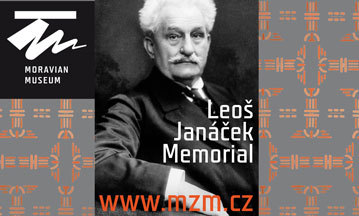Leoš Janáček: The Fiddler´s Child, JW VI/13
Anton Rubinstein: Concerto for Piano and Orchestra No. 4, op. 70
Vladimír Sommer: Vocal Symphony for Alto, Reciter, Choir and Orchestra
The programme of the orchestral concert offers three remarkable and rarely performed works. Janáček´s symphonic poem The Fiddler´s Child from 1913 is the first of a number of important compositions for symphony orchestra. It is an extremely demanding work to perform, especially for the string section, and violas in particular. The plot beyond the music refers to a poem by Svatopluk Čech with a strong social subtext. This emotionally charged composition is one of Janáček´s greatest works.
Thanks to his exceptional skills as a performer, composer and pianist, Anton Rubinstein stood side by side with the similarly virtuoso Ferenc Liszt in his day. In Janáček´s youth, Rubinstein´s name meant a lot. When the young Janáček decided to pursue a career as a concert pianist, he longed to study under Rubinstein, even though he could only read about most of his art. Unfortunately, this wasn’t possible for various reasons. Janáček later admired Rubinstein´s playing and compositional art at concerts which he attended during his studies at the Leipzig Conservatory in 1879. We will remember Rubinstein´s extraordinary personality with his Piano Concert No. 4 from 1864, a work which places high demands on its performers.
Vladimír Sommer´s Vocal Symphony is one of the most important Czech symphonic works of the second half of the 20th century. The monumental composition for alto, reciter, mixed choir and orchestra from 1958 carries the weight of its time and is a reflection on death and human cruelty. The three parts are composed to texts by Franz Kafka (Night), Fyodor Mikhailovich Dostoevsky (Raskolnikov´s Dream from Crime and Punishment) and Cesare Pavese (Death Will Come and Will Have your Eyes). It is an extremely forceful work, yet is also accessible for audiences, and it still has not lost its strong message more than sixty years since its creation.






